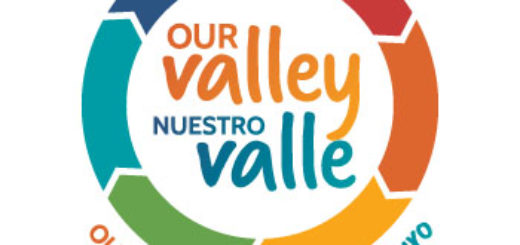Why I believe the Our Valley What’s Next effort is a community game changer
I have been greatly impressed with the Our Valley What’s Next project, a grass roots-driven community planning effort that was launched by a group of ambitious civic leaders who are committed to improving collaboration. The key players include such luminaries as Lisa Parks of the Douglas County Port District, Wenatchee Valley Chamber Executive Director Shiloh Schauer, Allison Williams and Steve King of the City of Wenatchee, and Lori Barnett from the City of East Wenatchee, and United Way executive Alan Walker. A complete list of core team members can be found at the artofcommunityncw.com web site.
The Our Valley What’s Next effort brought talented leaders together, engaged a diverse cross-section of the community numbering more than 2,000 individuals to contribute ideas. It’s particularly striking that there has been strong participation from the Latino community and from younger individuals.
This has demonstrated that people want to contribute to the community, care about what goes on here, and are willing to roll up their shirtsleeves and get to work, which flies in the face of the conventional wisdom that people are apathetic and won’t participate. Creative civic engagement works, it’s as simple as that.
The Chelan and Douglas county residents who participated in the survey said they wanted to see greater community collaboration, solutions to the affordable housing crisis and for civic leaders to find ways to capitalize on outdoor recreation. That’s a strong indication that citizens are very aware of major issues in the valley. Specific actions suggested by our fellow citizens include creating more quality jobs in the region, redeveloping the Columbia River waterfront, expanding airline service at Pangborn Memorial Airport, strengthening programs that deal with poverty and homelessness, expanding STEM (science, technology, engineering and math) programs, supporting the pursuit of U.S. citizenship for immigrants, creating a regional parks and trails authority and reducing the threat of wildfires, among other significant actions, to name just a few. It’s an impressive list.
In my view, the collective wisdom of the community proves the validity of this kind of grass roots-driven community building.
I spoke with Steven Ames, the Bend-based consultant who has been advising the local committee throughout this civic engagement effort. He’s worked with dozens of communities in doing this kind of planning, many of whom are “lifestyle cities” similar to the Wenatchee Valley. The “great leader” theory of leadership, in which a single individual is the difference maker, is not sustainable over the long term, Ames told me. Engaging community members in a meaningful way is the key to sustained success, he added. After watching the Our Valley What’s Next effort, Ames said he’s impressed. “It has been reaffirmed for me (here) the intelligence of the common person is very powerful,” Ames said.
To actually effect change requires a plan and accountability, and that’s the next step for Our Valley What’s Next. Community members developed a list of proposed actions and a community think tank, made up of a diverse group of leaders, is looking at proposed “game changers” — actions that would move our valley significantly forward. The overall plan along with lead agencies who have volunteered to champion the individual action will be announced this fall and the work will start in earnest.
When this process started more than a year ago, there were a lot of doubters and skeptics. And that’s understandable. But with the results we have seen, we should have great confidence that we can make a significant difference in determining our future rather than just letting the future happen. Collaboration and cooperation beats isolation and tunnel vision every day of the week.
If you would like to see my video interview with Steven Ames, please access artofcommunityncw.com. The Art of Community Project is dedicated to creative community building in North Central Washington. A series of stories on the Our Valley What’s Next project can be found there.



